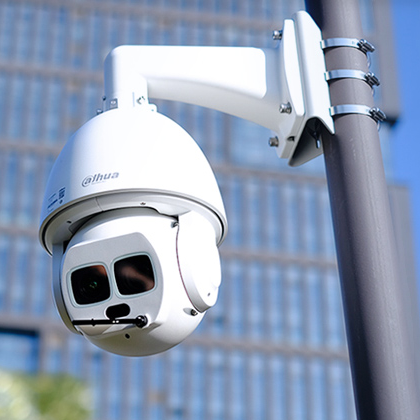
What Are HDCVI Cameras?
In today’s rapidly evolving surveillance world, clarity, affordability, and reliability are critical factors when choosing a CCTV system. One of the technologies that strike a perfect balance between high-definition video and cost-effectiveness is HDCVI, short for High Definition Composite Video Interface. If you’re considering upgrading an analog CCTV system or starting fresh, understanding HDCVI technology can help you make the right decision.
What Is HDCVI?
HDCVI stands for High Definition Composite Video Interface, a video transmission technology developed by Dahua Technology. It was introduced to the market in 2012 as a solution to the limitations of traditional analog CCTV systems. Before HDCVI, analog systems were mostly limited to standard definition (SD) video quality. If you wanted high-definition (HD), you had to go with more expensive IP-based systems.
HDCVI changes the game by enabling high-definition video (up to 4K resolution) to be transmitted over standard coaxial cables, such as RG59 or RG6. This means you can upgrade your camera resolution without having to replace the entire cable infrastructure—a huge advantage for installers and businesses looking to enhance their security systems without a complete overhaul.
Key Features of HDCVI Cameras
1. HD and 4K Video Quality
One of the most significant benefits of HDCVI cameras is their ability to deliver high-definition video, ranging from 720p and 1080p Full HD, all the way up to 4K Ultra HD in more advanced models. This allows for sharper images, better recognition of faces, license plates, and more detailed surveillance footage overall.
2. Long-Distance Transmission
HDCVI supports long-distance transmission without losing video quality. You can transmit:
Up to 500 meters for 1080p resolution over RG6 coaxial cable
Up to 300 meters over RG59 cable
This is ideal for large-scale surveillance systems where cameras need to be installed far from the recording unit.
3. Low Latency & Real-Time Video
Unlike some IP cameras that can experience delays due to data processing and network traffic, HDCVI cameras offer real-time video with negligible latency, making them more suitable for time-critical surveillance applications.
4. Audio and Control Over Coax
HDCVI can transmit video, audio, and control signals over a single coaxial cable. This reduces cabling complexity and makes installations cleaner and more cost-efficient. Control signals include camera OSD (on-screen display) menu settings and PTZ (pan-tilt-zoom) functionality, allowing full control from a DVR.
5. Compatibility with Analog Systems
One of HDCVI’s standout features is backward compatibility. HDCVI cameras can often be used with older DVRs (if the DVR supports multiple signal types like CVI/TVI/AHD/CVBS). Likewise, many HDCVI DVRs support legacy analog cameras, making it easier to mix and match equipment during system upgrades.
Advantages of Using HDCVI Cameras
✅ Cost-Effective HD Surveillance
HDCVI cameras offer HD video at a price point similar to analog systems. This makes them a great choice for small and medium-sized businesses or homeowners who want HD surveillance without the higher cost of an IP-based system.
✅ Easy Installation
Because HDCVI uses existing coaxial infrastructure, there’s no need to run new cables. This makes installation quicker, easier, and cheaper—especially for retrofitting older systems.
✅ Stable & Secure Video Transmission
Unlike IP cameras that rely on network connectivity and can be vulnerable to hacking or network issues, HDCVI cameras use point-to-point transmission. This means video is less prone to interference and cannot be accessed over the internet unless configured through the DVR.
✅ Minimal Latency
Thanks to its analog foundation, HDCVI offers faster live viewing than IP cameras, making it ideal for applications like retail stores, warehouses, and casinos, where real-time monitoring is crucial.
HDCVI vs. Other Technologies
Let’s briefly compare HDCVI with other common CCTV technologies:
| Feature | HDCVI | IP Cameras | Analog Cameras | HDTVI/AHD |
|---|---|---|---|---|
| Resolution | Up to 4K | Up to 4K+ | 960H or lower | Up to 4K |
| Cabling | Coaxial (BNC) | Ethernet (Cat5/6) | Coaxial | Coaxial |
| Latency | Very Low | Moderate | Very Low | Low |
| Cost | Affordable | Expensive | Very Cheap | Similar to HDCVI |
| Transmission Range | Long (300–500m) | Limited (100m max) | Long | Long |
Where to Use HDCVI Cameras
HDCVI cameras are ideal for various applications, including:
Retail Stores: Affordable surveillance with HD video quality.
Warehouses: Long-range transmission for large facilities.
Banks: Clear facial and activity recognition.
Schools & Campuses: Easy to install across buildings.
Parking Lots: High-resolution video for license plate recognition.
Whether it’s a new installation or an upgrade of an analog system, HDCVI is a smart, scalable choice.
Final Thoughts
If you’re looking for an affordable way to bring high-definition surveillance into your security system without the complexity of IP networking, HDCVI cameras are a perfect solution. They provide the best of both worlds: the simplicity of analog with the clarity of HD. Whether you’re a homeowner or a business owner, choosing HDCVI can enhance your security coverage while keeping your budget in check.
Looking to buy or install HDCVI cameras? Browse our shop or contact us for expert advice and installation support tailored to your needs.
